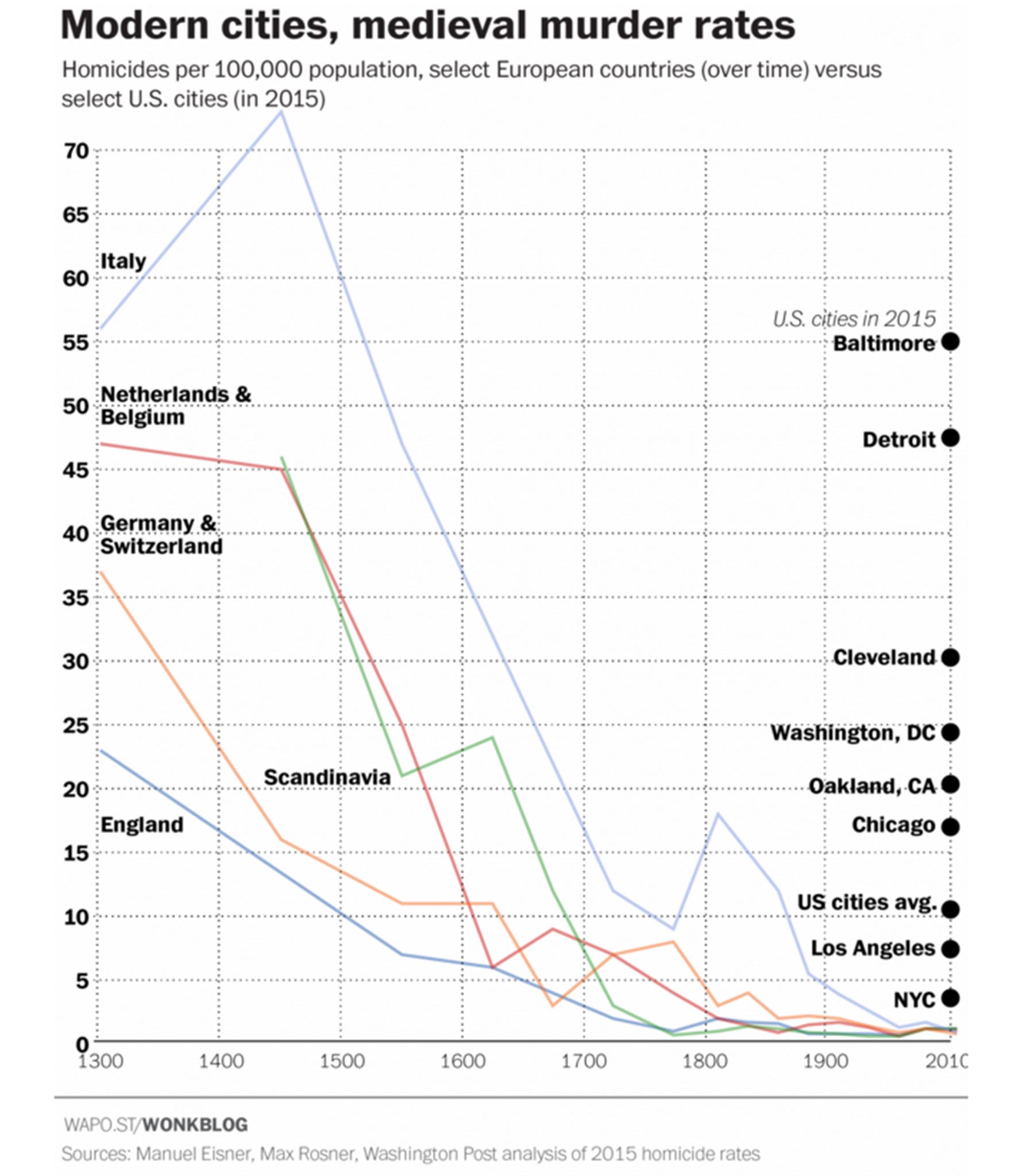Living in some US cities is like living in the Middle Ages, statistics show
On certain metrics, some regions of the globe lag behind others by literally hundreds of years

It's easy to forget among the daily din of headline-grabbing tragedies, but historically speaking, we live in a time of unprecedented health, peace and prosperity.
Global life expectancy has more than doubled since 1900. The number of people who die in wars has plummeted. The percent of the world's population living in abject poverty is at record-low levels.
These surprisingly sunny facts are among the massive database of global statistics curated by Oxford economist Max Roser at his website Our World in Data. “Most of the long-run trends are positive and paint an optimistic view of our world that is unknown to many who only follow the daily news,” Roser writes.
But one of Roser's central theses is that this global well-being isn't equally distributed. On certain metrics, some regions of the globe lag behind others by literally hundreds of years.
Homicide statistics provide one striking illustration of this. Historians have managed to piece together surprisingly detailed estimates of murder rates in European countries going as far back as the Middle Ages. They're able to do this by looking at things like court records and coroners reports, which some European cities have maintained for centuries.
The top-line finding is that, according to the available scholarship, murder rates in Western Europe are one-fortieth or one-fiftieth as high as they were in the Middle Ages. In Italy, for instance, there were more than 70 homicides for every 100,000 people in the 1400s. Italy's murder rate is closer to 1 in 100,000 today.
You see similar patterns, to varying degrees, wherever in Western Europe there's enough data to estimate long-term trends. While estimated homicide rates in the 1300s ranged from 20 per 100,000 in England more than 50 per 100,000 in Italy, in those regions murder rates fell sharply over subsequent centuries, and converged to about 1 per 100,000 today, according to United Nations statistics.
But the United States stands as a country apart when it comes to homicide measurements. In 2014, for instance, the murder rate in the U.S. stood at 4.5 homicides for every 100,000 people. That's roughly equivalent to the murder rate in Italy in 1912, or England's murder rate in the 1600s.

If you start digging down to individual cities, the comparisons become more striking. The murder rate in Los Angeles in 2015 is similar to England's murder rate in the time of Shakespeare. Living in Chicago today is similar to living in Italy in 1700, murder-wise.
Washington's murder rate last year was higher than the murder rate in England in the time of Chaucer. Baltimore had the highest murder rate of any major U.S. city last year, at 55 homicides per 100,000. That's about the same as the murder rate in Dante's Italy.
We are, of course, engaging in a bit of an apples-to-oranges comparison here. We're measuring modern U.S. cities — densely-populated urban areas — with European countries containing a mix of rural and urban areas.
There's a fair amount of squishiness to the historic estimates, too. They're only as good as the municipal records they're based on. It's hard enough for official record-takers to maintain accurate criminal-justice statistics today, in 2016 — one can only speculate how spotty the books were in Europe 700 years ago.
Still, the numbers provide useful context for understanding how crime and murder work in the United States today. One likely reason that murder rates were so high in Europe centuries ago is that there wasn't yet a robust legal system in place to help citizens resolve quarrels. In the absence of such a framework, people simply took matters into their own hands.
There's an analogous situation in some of the crime-ridden areas of today's cities. Criminal gangs working outside the law can't plea to the police when they need to settle a dispute with a rival organizations. So they take matters into their own hands, with bloody and often-tragic consequences.
Paradoxically, the historic data also provide some reassurance that Americans are not particularly unique when it comes to the petty trifles that we routinely kill one another over. Commentators decry the depravity of an American culture that leads to people killing one another over tacos and shoes. But in the year 1278 in London, there are at least two recorded of homicides arising from games of chess gone awry.
Copyright: Washington Post
Join our commenting forum
Join thought-provoking conversations, follow other Independent readers and see their replies
Comments